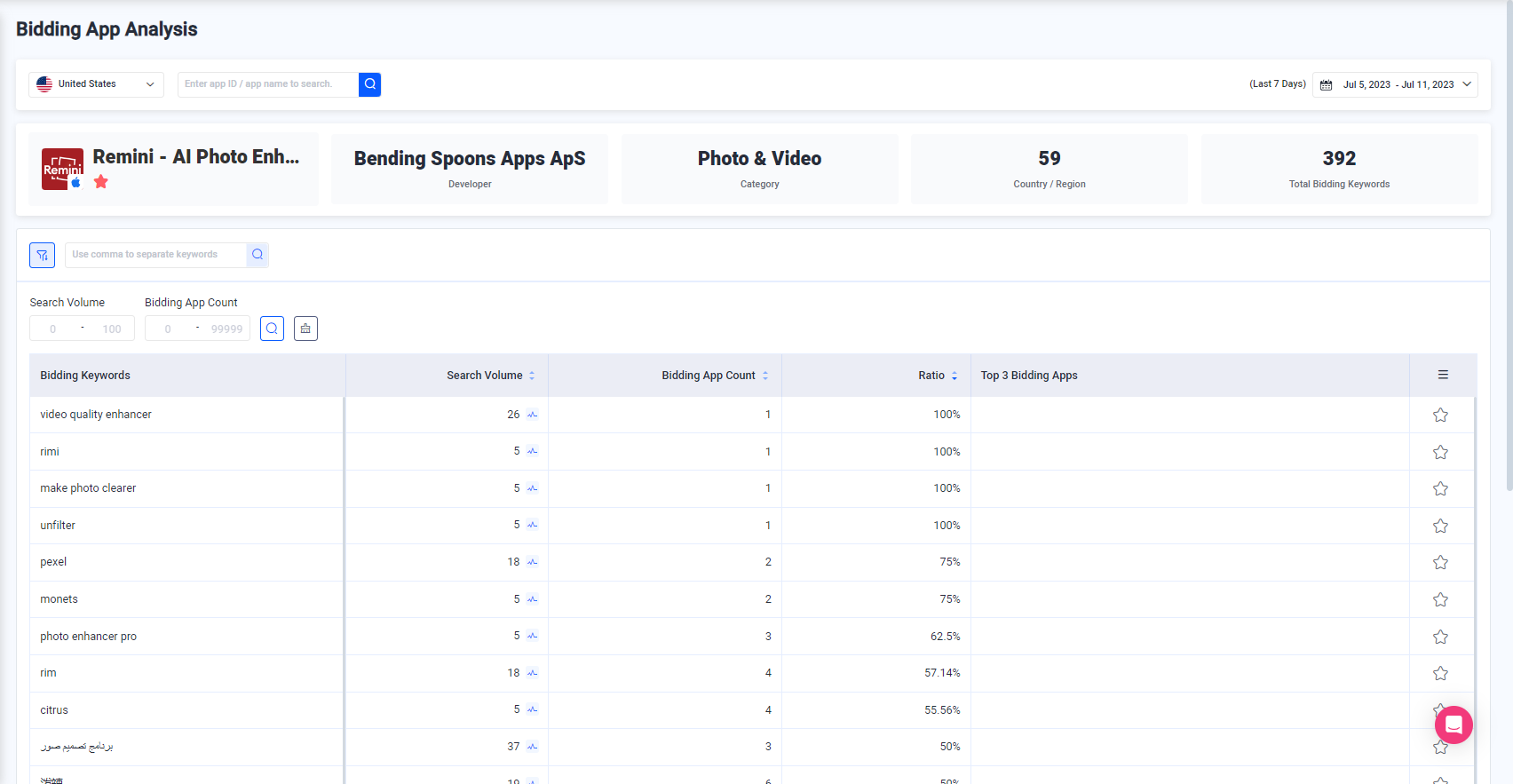The Secrets Behind Remini: Unveiling the Strategies that Catapulted Photo Apps to Top Rankings

An app named Remini: The A.I. Photo-Enhancing App recently surged to the top charts of the app store. In the competitive landscape of social media apps, such as Thread, Instagram, and Twitter, where each app competes for visibility, Remini has managed to maintain the top position for an extended period. This raises the question: why has a photo editing app achieved the coveted No. 1 spot? Have you ever used it?
The journey of Remini provides valuable insights and inspiration for photo apps seeking to enhance their offerings and achieve greater market presence. Let's explore how photo apps can jump to the top position in just one week and achieve such success.
One of the most significant factors in achieving such success is the adoption of AI technology. In today's rapidly evolving technological landscape, AI-driven features and algorithms have become a game-changer for photo apps. They can provide users with unique and highly valuable functionalities that were previously unimaginable.
Remini's AI-driven image restoration technology goes beyond basic sharpening and noise reduction techniques. It can generate intricate details that were absent in the original image, effectively breathing life into old or damaged photographs. By analyzing vast amounts of data and learning from patterns, AI algorithms accurately reconstruct missing details, improve sharpness, and refine colors. The result is a restoration that surpasses what was previously achievable, captivating users with its unparalleled results.
AI technology has revolutionized photo editing apps by providing advanced editing tools that can do more than just simple adjustments. These tools are designed to analyze images, detect elements, and apply enhancements automatically, saving users valuable time and effort. With these AI-powered tools, users can easily achieve professional-level edits, making their photos stand out from the crowd.
AI algorithms are also used to create innovative and unique filters that can transform ordinary photos into extraordinary works of art. These filters analyze the content of an image and apply adjustments selectively, enhancing specific areas while preserving the overall integrity of the photo. This level of intelligent filtering sets an app apart, attracting users who crave distinctive and visually appealing enhancements.
If you're interested in promoting your photo app through Apple Search Ads, you can conduct thorough research and utilize tools like FoxData to uncover valuable insights into the language and terminology used by your target audience. By browsing photography-related subreddits, you can gain a deeper understanding of the keywords, phrases, and topics that resonate with the community. This information can help you identify keywords to target in your Apple Search Ads campaign, such as "video quality enhancer," "Remini," or "make photo clearer," based on the specific features and benefits of your app.
One key benefit of Apple Search Ads is its ability to use the search match feature to find new keywords. By enabling Search Match, your ads will be matched to new search terms using data from various sources, such as your App Store listings, search data, and information about similar apps.
To make the most of Apple Search Ads, it's essential to target the right keywords. This means targeting both specific and general keywords, and determining the best bidding strategy for each keyword. You can use a keyword research tool to help you identify relevant keywords that align with your app's niche and goals.
By incorporating insights from Remini and other relevant platforms, you can optimize your keyword targeting within Apple Search Ads and ensure that your ads reach the right audience, leading to more downloads for Remini.
To achieve your desired results, it's recommended that you gradually increase your bids until you reach your target cost-per-acquisition (CPA) and start generating downloads from popular keywords related to your app's niche. By adjusting your bids strategically, you can balance cost efficiency with maximizing exposure and downloads for your app.
When it comes to an app's success, user experience plays a key role. Prioritizing user experience and simplicity can lead to increased user engagement and widespread adoption. Streamlined interfaces, automated editing tools, and intuitive user experiences are essential ingredients for a successful photo app. Remini, with its user-friendly interface and seamless editing process, has harnessed the power of user-centric design to become an industry leader.
One important aspect of prioritizing user experience is providing a simple, easy-to-understand interface. Cluttered and confusing interfaces can frustrate users and drive them away. By simplifying the layout, organizing tools logically, and ensuring clear navigation, an app can provide a smooth and intuitive user journey.
Another way to enhance user experience is by integrating automated editing tools. These tools use AI technology to analyze images and apply enhancements automatically, saving users time and effort. By eliminating complex manual adjustments, users can achieve impressive results with just a few taps. Automated tools simplify the editing process, making it accessible to a wider audience, including those with limited technical knowledge.
When it comes to photo editing apps, simplicity is key. It's not just about making the editing process simpler, but also streamlining the entire user journey, from app installation to sharing edited photos. By simplifying the user experience, an app can make it enjoyable and efficient.
Pricing is an important aspect of success for photo apps. To develop pricing models that work, it's essential to understand the target audience's needs and expectations. By conducting market research and analyzing user preferences, photo app developers can gain insights into their target audience's willingness to pay and the value they seek.
To establish an effective pricing model, photo apps should consider the value proposition they offer. Pricing should be aligned with the features, functionalities, and overall experience the app provides. It's crucial to strike a balance between affordability and the value that users perceive they are receiving.
Furthermore, offering pricing options that cater to different user segments can maximize monetization potential. For example, a freemium model can attract a wide user base by providing a basic set of features for free, while a premium version can offer advanced capabilities for a fee. By catering to various user preferences and budget ranges, photo apps can tap into different market segments and expand their user base.
To ensure long-term sustainability, a monetization strategy should be adaptable and flexible. This involves regularly assessing user feedback, market trends, and competitors' offerings to make pricing adjustments and introduce new monetization features. By actively engaging with users and understanding their evolving needs, photo app developers can continuously refine their pricing strategy and deliver value that aligns with market expectations.
In summary, effective pricing and monetization strategies are integral to the success of photo apps. Remini's pricing model, with its affordable subscription and additional features, showcases the importance of balancing affordability with added value. By considering the target audience, aligning pricing with the app's value proposition, and offering pricing options that cater to different user segments, photo apps can optimize their monetization potential. Striking the right balance between pricing and value ensures a sustainable monetization strategy, driving revenue growth and enhancing the app's long-term viability.
In conclusion, Remini is an inspiration for photo app developers seeking to deliver exceptional value to their users. By incorporating AI-driven features, highlighting unique selling points, ensuring a seamless user experience, and offering pricing models that balance affordability with added value, photo apps can pave their way to success in the competitive app store landscape.






